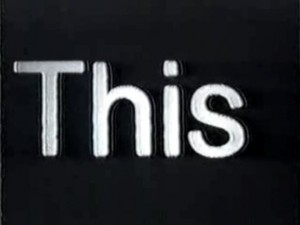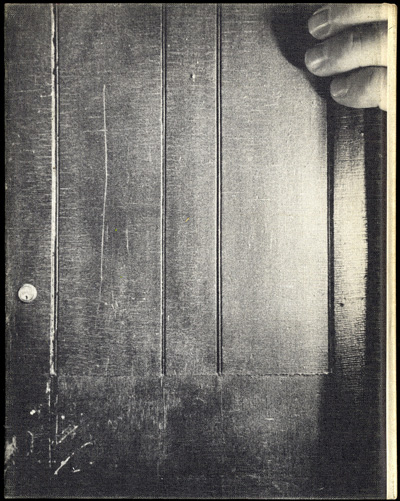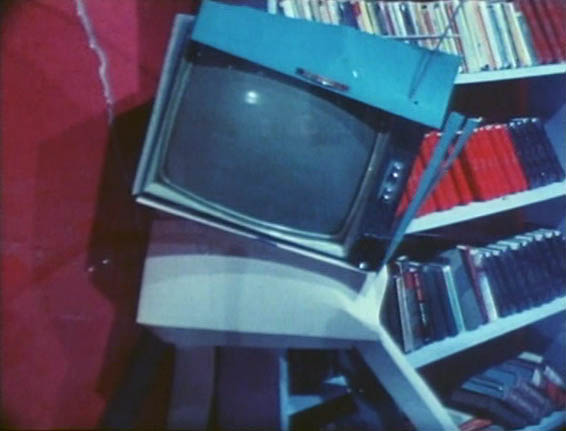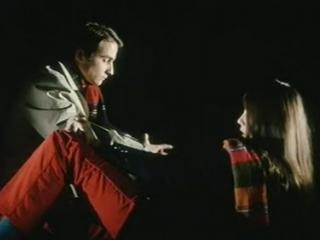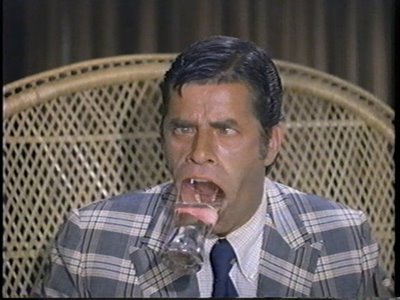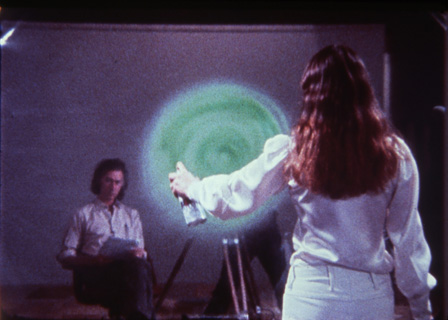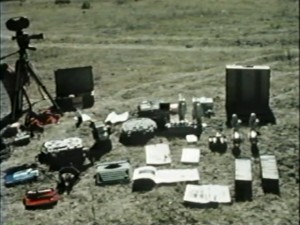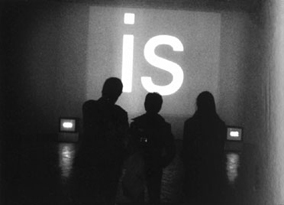I only learned about Michael Snow’s death today, at the age of 94, when I received an invitation from Sight and Sound to write his obituary. Not long after Godard and Straub, another giant of the avant-garde has left us.
This is the second of two interviews I’ve had with Snow. (The first, “The `Presents‘ of Michael Snow,” can be found elsewhere on this site.) Commissioned by Simon Field, it ran in the Winter 1982/83 issue (no. 11) of the excellent English magazine Afterimage, a special issue called “Sighting Snow,” and it concerns both So Is This and Presents. I’ve incorporated some but not all of the additions from the version of this article that was reprinted in my book Film: The Front Line 1983 (Arden Press). I regret some of the hectoring tone of my political rhetoric here, and it became clear to me after Film: The Front Line 1983 was published that Snow objected to some of this rhetoric in the book even more, thus curtailing some of our friendship that had prevailed beforehand. – -J.R.
Snowbound: A Dialogue with a Dialogue
By Jonathan Rosenbaum
A few specifics about what follows. Last September 15th, I taped an interview with Michael Snow at his home in Toronto. Eight days later, in New York, at a screening of So Is This at the Collective for Living Cinema (my first look at the film), I presented Snow with a transcript of our dialogue. The following evening, when I returned for the second screening of So Is This, Snow handed me back the transcript with a few corrections, additions and other changes. Roughly half of that material is printed below in italics; in roman are my own notes and responses to this text.
Late afternoon, I find myself in Snow’s living room — only a couple of subway stops from the middle of downtown Toronto, yet it seems downright rural; across the street are railroad tracks, and when a train rushes by at one point, it feels exactly like the country. There’s a similar kind of city slicker/just plain folks dichotomy in the cozy room, which is full of Snow objects. Next to a trumpet on top of its case is the elegant little grand piano at which Snow’s mother recites biographical information about Rameau in Spanish in the third sequence of Rameau’s Nephew –- the same piano at which Snow will today play some limber bebop à la Bud Powell to relax a couple of hours later, explaining that he often picks bebop because he can’t play Bach. There’s a front door which isn’t being used — or, rather, a front door that has been turned into the concept of a front door (a different kind of use): over its inside surface is attached a color photograph of a painting of the same door, amazingly the same size as the real one except for a curious anomaly — that also in the photograph, in front of the painting, is a hand holding a lit match that’s gigantic, many times larger than life. For a related effect, look at Snow’s three giant fingers curled around the “door” (actually a photograph of a door) on the back cover of his 1975 book Cover to Cover.
It’s a room that, like Snow, is warmly, enjoyably, even deliciously absorbed in and turned in on itself — like a stanza of Walt Whitman, perhaps; very North American, in any case. It’s likely a place where Snow does a lot of his reading — his main form of cultural consumption these days, he says, apart from listening to tapes of his weekly sessions with his local improvisational music group, CCMC: there’s a wall full of books, and in our conversation Snow speaks of recently reading a lot of ancient literature (Euripidies, Aeschylus), philosophy both ancient and modern (Aristotle’s Politics and books about it, including Mind and Madness in Ancient Greece; Derrida’s Disseminations, Baudry’s Le Dispositif, Lyotard). Not so long ago, Snow attended a Lyotard conference in France, organized around the question, Comment on juge? — a conference, he says, at which Derrida physically recoiled from a screening of Presents.
The previous time I interviewed Snow (for Film Comment, May-June 1981) was also in Toronto, right after he showed me Presents. Since then, Presents has made the rounds of other big cities, and the response has been decided mixed, to say the least — particularly in relation the film’s third and longest section. In The Village Voice, J. Hoberman took me to task for referring to it as a masterpiece in The Soho News a few weeks earlier. Questioned critically about “the male gaze” at the Collective after a screening, Snow grew defensive, and it’s clear that some of the negative responses to Presents continue to gall him. They gall some others, too: in the recent Collective catalogue for their two month retrospective last fall, 10 Years of Living Cinema, from which Snow’s work is conspicuously absent, Tom Gunning concludes his essay, “Looking Backward: Ken Jacobs Presents the Past” with the following:
“Jacobs deals with films as a trace of what was present and now is absent. The image is not fulfilled with a aura of full presence, but rather through the act of being presented, here and now, to an audience. As I end this essay, I must meditate on the absence from this retrospective of Michael Snow’s Presents, a film which deals with many of these issues from another perspective, and certainly one of the most important films shown at the Collective for Living Cinema, a film misunderstood and abused. I feel I can write for this program in good conscience only if I lodge this protest.”
It’s been said that Snow is sensitive to criticism. Another way of putting it would be to say that, unlike many filmmakers, he both thinks about and responds to criticism — two concrete ways of demonstrating his sensitivity. (During our conversation, he was looking forward to an engagement of issues related to Teresa De Lauretis’ article on Presents — “Snow on the Oedipal Stage,” in Screen, vol. 22 no. 3 — at an upcoming conference in Milwaukee.) And he thinks enough of my skeptical comment to add two further paragraphs to his Toronto response in New York.
JR: I find that the most difficult aspect of the last and longest sequence of Presents [the hour-long assemblage of handheld moving-camera shots], the thing that makes it hardest for me to get into the film, are the drumbeats heard at the beginning of each shot.
MS: Um-hm. Well, I can understand that in a way, because what it does is it sort of flattens it. On the one hand, the drum beat is always the same tonality so it establishes a kind of picture plane, I think. And things kind of advance or recede from that, but it tends to equalize in a way, even though the lengths of the shots are all different. So it isn’t rhythm, it’s never rhythm. Yet there’s a sense of being equalized because of that tonality. But that’s proper, you see, because they are equal, on one level. They’re all film, the subjects have all become film, they’re all this particular thing, which has a certain power. It should be — I hope –knowledge of the reduction that’s involved might be a little sad. It is sad. They’re ghosts, those things. There’s not really that much there, in a way. There’s a kind of deflation of the medium. Everything’s disappearing constantly. Films give the impression of keeping something, but what they keep is so minimal. It’s just like everything else, it’s just going. You catch everything out of the corner of your eye, really, and this film makes that more extreme. In life this can seem a sad thing, and you don’t want to be told that, but the medium of film, it seems to me, is quite properly concerned with fate. I mean, what is a more appropriate content for a medium that is a temporal structure that’s determined? That’s another thing I’ve been finding out about Euripides, especially The Bacchae and The Trojan Women — they are just so staggeringly fantastic. The whole element of fate that’s in Agamemnon, too, it’s in all these things; it’s in cinema. I hope it’s in all my films. The mystery of going and not knowing where you’re going, but the way is predetermined. I mean, some people think they know, but I don’t think they do. (Laughs.)
The nature of the drumbeat is very much involved with the dialectic in the film. The tonality does establish a sense of two-dimensionality, thus equalizing all the shots. At the same, happening at every cut, they individuate and isolate each shot, but the violence of the sound emphasizes the material nature of the cut. As in the memory selection of important images, it becomes a question of the spectator’s emphasis on one of the levels of materiality and illusion that are all in constantly shifting emphases.
The compound functions of the handheld pan and the drumbeats are analogous to the function of individual brush strokes in Cézanne’s paintings; they are hand-made smears of colored material on a surface but also are illusionistic representations. To me this reconciliation is a most important (necessary) and difficult problem of film and of all art-making.
Reviewing Jerry Lewis’ Hardly Working in The Soho News [See my review in my collection Placing Movies: The Practice of Film Criticism], I argued that Lewis, Snow and Godard shared an interest in fields rather than plots. Due to a typo, the final “p” was dropped, making the point a matter of property rather than aesthetics. “Lest there be any further confusion,” I wrote in a letter to correct this error, “the sort of field I have in mind is the conceptual kind — visual, aural, mental — that an artist thinks in (e.g., the exhaustion of space as action, in separate sequences of, say, Presents, Le Gai Savoir and Hardly Working).” This was mainly an allusion to the second and most popular of the three sequences in Presents, filmed on a movable stage in a studio, in which an entire set is demolished by (1) an off-screen machine jerking the set, actors and all, back and forth, and (2) the camera proceeding into the set’s interior and literally attacking much of the remaining wreckage.
Exhaustion, I might have added, is a theme that haunts all of Snow’s work. What are Wavelength, Back and Forth, and La Région Centrale but the simultaneous exhaustion of (1) a loft, a classroom and a non-human landscape, respectively, and (2) the spectator? Ditto Rameau’s Nephew and sound/speech, Breakfast [see below] and groceries, So Is This and silence/words — films which devour their own subjects, genres and procedures. The slide and tape A Casing Shelved exhausts a bookcase, the recto-verso projection piece Two Sides to Every Story [see below] exhausts the space of two rooms (the one it was made in, the one it’s projected in).
Snow himself looks rather exhausted, too, at the same time that he seems very much alive — a bit like the city/country paradox. (The trouble is, in order to be a North American conceptual artist you have to be all things to all people — all people and all things being alternate versions of one’s lonely self.) His eyes have a sunken look, but in mid-September he’s a couple of months away from becoming a father, and proud as a peacock about it; Peggy Gale, the expectant mother — curator, critic, and editor of the much respected Performance by Artists — is cheerful too. Snow likes to laugh a lot these days, and in a way one can see humor becoming a much more dominant force in his work with “Rameau’s Nephew” and Breakfast — although after a first screening of Breakfast and So Is This at the Collective, during which the audience was in an almost constant state of manic hilarity, Snow remarked during the question-and-answer period that he doesn’t think these films are all that funny.
Actually, humor can be seen performing a specific role of renewal in Snow’s work after the camera movement trilogy of Wavelength, Back and Forth, and La Région Centrale, a hedge against exhaustion. How could he (or we) ever get through the 260 minutes of “Rameau’s Nephew” by Diderot (Thanx to Dennis Young) by Wilma Schoen without the puns? (How we get through it with all the puns is another matter.) Or consider his recent publication High School (1979), done in the form of a spiral notebook — a sketchy conceptual joke book full of Snow’s mainly adolescent kind of humor, flashes of which are also evident in Presents and So Is This. (Literally flashes in both cases — in Presents, the fleeting bits of Little Annie Fanny nudity on the part of the actress/model in the first two sections; in So Is This, when “tits” and “ass” are flashed almost subliminally in single frames in the midst of a sentence about the Ontario Censor Board, who gave Snow a lot of trouble with “Rameau’s Nephew” as well as Presents.)
Insofar as conceptual art and puns are ultimately about “everything” (cf. Finnegans Wake or the behavioral/audiovisual puns in Rivette’s Out 1: Spectre), Snow has found himself engaged in social questions in spite of his dogged apoliticism.If an ostrich is a formalist, he/she must find that even the inside of the ground tells one something about the outside, and in comparable fashion, it would seem that Snow’s consideration of the “climate” that his films and other works enter involves him willy-nilly in ideological questions. “There’s a lot of violence involved” in making a film, he concludes below: not quite the same thing as Jon Jost’s evocation of “the iron ore pits of Minnesota,” “the steel mills of Gary, Indiana,” “the gold mines of South Africa,” and “a camera factory in France” involved in the making of his own Speaking Directly: Some American Notes (1973), but perhaps a step along the same general path.Or, if not, an acknowledgement of the very different kind of violence that can be involved in the reception of a film.
JR: Do you find that most people prefer the second section of Presents, where the set gets destroyed?
MS: Yeah. But not consistently — I know quite a lot of people who like the last section, too. I think, for me, I thought of it as a loaded or trap kind of film. And I think it’s working. (Laughs.)
JR: Could you elaborate on that?
MS: Well, I think the climate of the last few years….A lot of people have been on a kind of Möbius strip that’s made up of ideology and entertainment. And I think that — I don’t know, this is really presumptuous — but I feel there’s been less free seeing or less open seeing amongst cognoscenti of film in the last few years, and more tendency to want to see what you already know in the sense of affirmation of the correctness of your views. And that’s a cultured thing — there’s a stage of sophistication in a certain sense. But it’s a little damaging sometimes….I very rarely consider the climate that my films go into, but this is the first one where I really thought about the environment that it’s going out into.
JR: And you wanted to confound some of those expectations.
MS: Yeah.
JR: How was the movement of the set in the second section effected?
MS: The set was built, and it’s on rollers. It was oulled from side to side by two forklifts; then there’s a part where the set gets lifted up and moved towards the camera. The mechanical aspect of it is not shown, but I think you have to be aware that there’s the power of the machinery involved.
There’s a whole thing about tools and about motion in Presents. There’s every kind of hand tool, and then there’s structures, all kinds of structures — buildings which relate to the kind of construction that’s involved in making the film. Fundamentally it’s about creation and destruction. There has to be something that has to be chopped off, something that has to be smashed or flattened. How do you make these films? Where does that come from? It has to be gouged out of the ground. There’s a lot of violence involved.
Some of these things are not explicitly stated, but they’re kind of bubbling in Presents. Like destroying a set is a crearive act in a sense, because flattening is a two-dimensionalizing, and so on. But it’s the reverse of making the set, which involved even more violence, because most of that stuff is wood, it had to come from somewhere, and it was all hacked and hammered and sawed. I mean, which end is which? It has a lot to do with power. And that gets involved with the fact that there’s a machinery for looking — the film itself ….The part where the set moves is literally a role (and “roll”) reversal on the relationship of the camera to the subject.
If I have a problem with Snow’s formalism, this mainly has to do with the uses that rightwing critics and filmmakers, from P. Adams Sitney to Paul Schrader, are potentially able to make of it. Clearly there are materialist as well as transcendental ways of dealing with modernist film work, from Dreyer to Bresson to Godard to Straub-Huillet, and it disturbs me to contemplate the possibility of some compatibility –some very North American marriage of convenience — between Snow’s structural concerns and the unspeakably racist, sexist and quasi-fascist positions of Schrader in Taxi Driver. (That racism, gun worship, and structural concerns co-exist in the film has first been pointed out by Patricia Patterson and Manny Farber, in their exemplary article about the film in the May-June 1976 Film Comment. The question of whether these things are mutually supportive seems more debatable — but not irrelevant to the issues raised by Snow’s remarks below.)
On the other hand, I think Snow deserves to be applauded for his political candor — a virtue which he does not share with many of his contemporaries in the avant-garde. How many conservative armchair Marxists and leftist Royal Families in our midst, especially in Europe, would admit for a second to being aristocratic in their theory, practice and ideology? Admittedly, by exempting himself from a political arena, Snow can afford to be honest, as many of his colleagues presumably can’t be. Nevertheless, it is not unreasonable to hope that a serious, leftist avant-garde position can grow out of a form of honesty that goes beyond public relations, rhetoric, and careerism; and if this hope is warranted, Snow’s lucidity may indeed show the way more clearly than the work of many of his more politically vocal contemporaries.
Consider the concrete social pressures involved: Europeans are encouraged more to be political than North Americans in this area of debate, creating a certain warping of impulses on both sides. But consider, too, the ways that Snow is seemingly beginning to respond from pressure across the Atlantic in So Is This — by acknowledging and responding to a specific social context both inside and outside the screening situation. His own discourse about this apparent change is ambiguous: after showing the film for the second time at the Collective, he says, among other things, that there is political commitment in the film, but not about El Salvador; that “the essential thing [one is] doing in a film is shaping light and time”; and that “it turns out to be your own voice silently reciting the text of the film, one word at a time, although it’s under someone else’s direction.” Is there a political commitment in making So Is This a partially collective and shared as well as individual experience, in a way that his earlier films are not? Considering the wider audience and closer understanding made possible by this approach, I think one can argue that there is — within certain limits.
Much the same can be said for Flight Stop (1979), a photographic sculpture of 60 fiberglass geese landing, each one suspended from three wires, in a formation whose progressive “cinematic” patterns resemble those of a zoetrope — Snow’s most well-known and popular work in any medium, located in downtown Toronto’s Eaton Centre, an enclosed shopping mall. A social work insofar as it functions with maximal effectiveness inside a public arena — which, in the case of a shopping mall, also happens to be private property — Flight Stop resembles So Is This in both its serial and cluster patterns (the former using geese, the latter using individual words on a screen), which bear some eerie relation to the crowds/audiences attending to them. Peter Gibian’s two-part article, “The Art of Being Off Center: Shopping Center Spaces and Spectacles,” which mainly centers on Flight Stop — an essay printed in Tabloid #4 and #5, which Snow both likes and recommends — describes this work in nearly utopian terms (“visionary freedom in enclosure”), and clearly some of the same happiness of group activity is implied in the cheerful progressions of So Is This.
A recent court action involving Flight Stop, by the way, indicates that Snow is quite capable of being socially aggressive and engaged when the integrity of his work is involved. During the last Christmas season, after the Eaton Centre tied scarlet ribbons around the necks of all 60 of the geese as part of its Christmas decoration, Snow went to the Ontario Supreme Court in protest and, after a hearing, Judge Joseph O’Brien ordered the ribbons removed by the following Monday morning — a decision widely criticized in the Toronto press.
JR: How do you feel if anyone sees your work in a religious way? Does that bother you?
MS: No, it doesn’t. I think if you don’t recognize that certain kinds of examinations of reality bring you to a stage that asks for a metaphysics, you’re being stupid. Because even semiotics heads towards being a religion. What does it go towards except the Word, the Word of God? I don’t have any specific religious beliefs, yet I’ve found often that there’s a limit to the capacity to judge both in and out because of what we are. What is it that’s doing the judging? We don’t know these things, we really don’t. And I think to have to be sort of humble about it.
JR: Ideology doesn’t seem to be acknowledged too much in your work, at least as a frame. How do you feel about it?
MS: Well, everybody’s always in the time they’re in — there’s no stepping out of it. But fortunately that isn’t as constricting as it might sound.There really is a lot of variety in life! But I thin k artists have always gotten away with something in relation to their patrons and audience in general — that it’s essentially, in the old-fashioned craft sense, an individual or individualistic thing, even when you’re the leader or the general in an army (which is the way a film or opera can be made; there are executive kinds of creation, too). But I think it really comes down to a very personal kind of leadership. So my ideology tends to end up being — like the content of my films in a political sort of a sense is really a kind of — I guess it’s aristocratic, in a way. But I’m thinking of the aristocracy of artists.
JR: How do you feel about asserting yourself within a particular political struggle as an artist?
MS: I have a lot of trouble with that because I know that I don’t know anything. I can be indignant, too, but I really know that it’s very difficult to find out what happened. And I have become involved in certain things where I felt I knew enough to take some kind of action.Like, I don’t know whether you heard anything about the Montreal Corridart business. There was a kind of street exhibition which had very good installation kinds of work. It wasn’t like a Washington Square show but had really quite marvelous things; it was during the Olympics. And the mayor decided he didn’t like it, and one night he had it all destroyed, without talking to anyone. It was quite a lot of work by some of the best artists in Montreal, and they all went to court. They lost the case — the judge’s verdict was quite amazing; it made it all a question of taste. But anyway, they had to raise money and stuff like that, and I tried to help with that, because I was close enough to know something about it. But I don’t hardly ever read the newspapers, and I don’t watch television, although I always know what the catchword is. I mean, there’s a little something about that in So Is This — it says there’s going to be no political commitment or talk whatsoever, there will be no mention of El Salvador; because when I made the film, that was what was the main thing in what was called “the news” ; if I’d done it two weeks later, I would have said the Falkland Islands. Now it would be Beirut, I guess…But I don’t know. They’re far away. I’m not saying that a lot of people aren’t getting hurt. But I don’t know what the fuck’s going on.
JR: What I’m thinking about, though, is that in addition to being part of the history of representation, your films are also quite simply part of history. So when someone looks back at So Is This and sees a reference to El Salvador, that will be a way of placing it in history.
MS: I’d like to add that my use of the words “El Salvador” in So Is This is not callousness; it’s an attempt to make the spectator be “in the now” with the film. THIS is a most present word, but around that there are several mentions of distant times and places (ending with the 4th century B.C.). What is important in the work (of art) is stronger than such references. The film says it was made in April 1982, talks about certain “local” problems (censorship), but all with a view to using these subjects to make what’s more important, THIS work.
Everything dates, but you can try to step out of time a little bit. Photographs and tapes as soon as they’re made are just immediately full of nostalgia.
JR: There seems to be a real difference between Europe and North America in relation to ideology. Within Europe, it’s seen as inescapable.
MS: Yeah, I think that’s true. And maybe it is Canadian of me, in that we have no power and are partly kind of colonized by foreign businesses, mostly American — and that’s been our policy, that we’ve had the same government for thousands of years (joke). So maybe my attitude is related to the fact that I’m not in the mainstream of political history, that I don’t exist in it — although there are plenty of people here who say they do, who follow everything, and are active.
In the past, I’ve had problems locating Snow within the history of cinema, which has led me to conclude that he belongs more in the history of representation — a lofty badge of identity that solves certain problems and creates certain others.I regret the facility of my remark above about Snow’s film being “part of history” (what history?), but at the same time I would defend his right to define that history as the history of art (which he does), and not according to some alternate theory of representation (such as “the news”). It seems significant that Snow doesn’t own a television set; that undoubtedly makes certain things possible, too. (So Is This can be regarded as a pre-McLuhan work in more ways than one.) Close attention to “local problems” is not one of them. But at the moment when perception itself becomes a political question, Snow’s work functions politically.
— Afterimage No. 11, “Sighting Snow” (Winter 1982/83)

